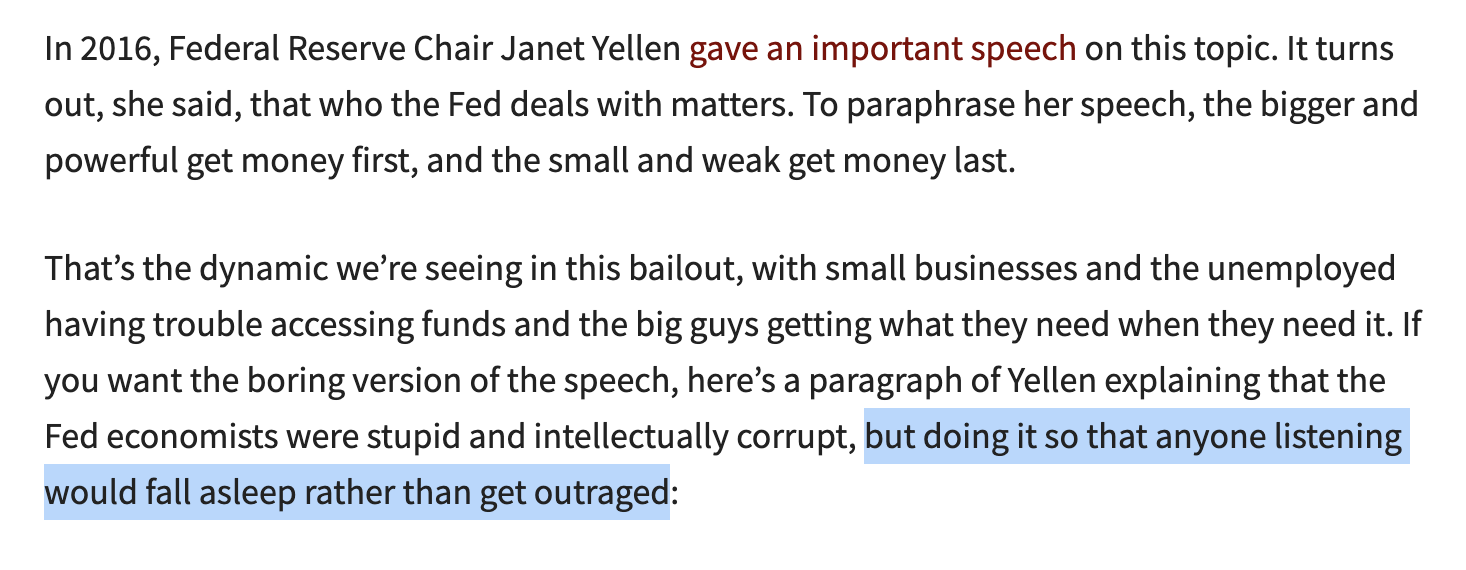The Cantillon Effect: Why Wall Street Gets a Bailout and You Don’t

Another insightful article by Matt Stoller. The Cantillon Effect states that whoever is closest to the money when it's initially distributed benefits the most and whoever is farthest away benefits the least. It used to be the government had channels to distribute money more evenly but in modern America it's mostly the case that the big and powerful get money first, the weak get money last. I'm encouraged by the direct checks to the public that've been happening instead of only big checks to financiers.
From the article:
The Reconstruction Finance Corporation, government procurement, the Federal Housing Administration, the Federal Reserve, agricultural credit supports, Federal Home Loan Banks, credit unions, and regulations like Regulation Q were all mechanisms to ensure the flow of money would be neutral.
Since 1981, increasingly the only channels that work to move money creation are the Federal Reserve to Wall Street, as well as the backstop to mortgages, who could get money to new homebuyers through mortgage lenders. Housing has been a key driver in both recessions and recoveries for a lot of reasons, but also for a simple one. It’s one of the few ways to get money into the hands of normal people in America at scale.
The Federal Reserve has usually seen its role as printing money and distributing it to the economy, largely by moving money to big banks and assuming they will, in turn, increase the amount of money available to everyone else equally. The 2008 crisis jarred this vision of neutral and frictionless money movement, because it became obvious that institutions matter.